
Cologne: From Dawn Till Dusk
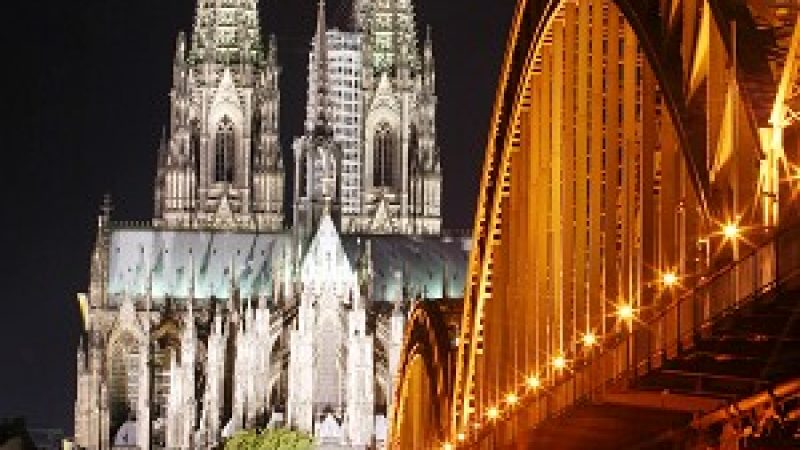
Cologne is one of central Europe’s most captivating cities. It offers the ideal combination of an attractive riverside setting and enchanting historical center, as well as some of the best culture in Germany. The Romans were the first to recognise the area’s potential, arriving in 33 BC and founding what was to become Germany’s most important city for many centuries. It was the western most colony of the Roman empire.
The name, Cologne comes from Colonia Agrippina after Roman Queen Agrippina. Today it retains much of its grandeur, boasting the country’s most visited monument, the spectacular cathedral, one of the largest gothic structures ever built.
In fact, Cologne is known as the City of Churches. On every nook and cranny you will find a monumental church. Some of them are so huge that they could be the talk of the town in any other city. But not in Cologne.
All of them are dwarfed by the central cathedral (Dom) in the city centre. For me the high points of the cathedral are it’s location by the river Rhine and it’s fantastic stained glass windows rivaling the best in Rome. Even more fascinating is Cologne’s rich cultural scene—it is seen as Germany’s cultural heart, with an astounding collection of superb museums and art galleries. But perhaps the most endearing feature of the city is its people, renowned for their sharp sense of humor and thirst for fun, traits which culminate in the yearly Carnival, one of Europe’s biggest street parties.
Cologne was nearly destroyed during the world war II bombing campaigns of the allies. It is said that nearly 99 percent of Cologne’s buildings were in ruins at the end of the war.
 Historic Dom Hotel. (Michael Ozaki/The Epoch Times)
Historic Dom Hotel. (Michael Ozaki/The Epoch Times)One interesting reason is that whenever allied bombers started their flights over to Germany and had to turn back due to some reason, they dumped all their bombs on Cologne, the westernmost German city before exiting the German airspace.
Amazingly the cathedral survived the bombs except for minor bruises. Maybe because the allied bombers used it as a landmark and didn’t want to destroy it so that they knew their bearings. Cologne is also a very important junction on Europe’s rail map and serves as a very convenient gateway to France, Holland and Belgium. Paris is just four hours by train and Amsterdam is only two.
Being a cosmopolitan town, there is no dearth of any type of foods you can imagine including some nice Chinese and Indian restaurants.
Shopping
The busiest shopping area is the pedestrianised Hohe Strasse, near the cathedral, which leads onto Schildergasse. This is the city’s mainstream shopping area, offering a mix of clothes shops—including Gap, H&M and C&A—and department stores.
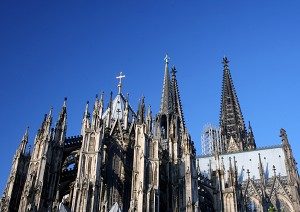 The Dom Cathedral. (Michael Ozaki/The Epoch Times)
The Dom Cathedral. (Michael Ozaki/The Epoch Times)On weekends the streets are lined with buskers and performance artists, and the center of Schildergasse is filled with market stalls selling jewelry and fruit and vegetables.
Cologne’s trendiest street is Ehrenstrase, popular with students and crammed with eclectic shops. You’ll find anything from retro jeans to kitsch furniture, as well as cutting-edge designer items. Squeezed between the shops are a handful of trendy cafe’s and bars, always full of students and shoppers.
Although no longer fashionable, a resolutely popular souvenir is the city’s namesake, a bottle of Eau de Cologne—or Kölnisch Wasser.
The best-known brand is 4711, named after the house number where it was invented, and sold today at the 4711 store on the corner of Schwertnergasse and Glockengasse. The distinctive blue-labelled bottles are pretty enough, although the scent is something of an acquired taste.
Art
 Inside the Dom Cathedral. (Michael Ozaki/The Epoch Times)
Inside the Dom Cathedral. (Michael Ozaki/The Epoch Times)Museum Ludwig is perhaps Germany’s finest collection of modern art. There is an excellent selection of German Expressionism including pieces by Otto Dix and Max Ernst, as well as an impressive array of Picassos, and Pop Art greats such as Andy Warhol and Jasper Johns.
The Wallraf-Richartz-Museum, housed in a strikingly modern cube, focuses on the fifteenth-century Cologne school, ranking as the best collection of period art in the country. There is also a good Impressionist section, featuring pieces by Renoir, Monet and Van Gogh.
For an insight to the life and art of socialist Käthe Kollwitz, visit the Käthe Kollwitz Museum Köln which houses a collection of her sculptures and monochrome graphics. Kollwitz was one of Germany’s most important artists, her exceptionally insightful prints and sculptures focussing on themes of human suffering—war, death, hunger, and poverty.
Culture
The highlight of the city is the spectacular Dom, the city cathedral, one of the largest Gothic buildings ever constructed. The spires were the tallest structures in the world until the erection of the Eiffel Tower, and they continue to dominate the city’s skyline. The arduous climb to the top of the spires is worth it for the superb views over the city.
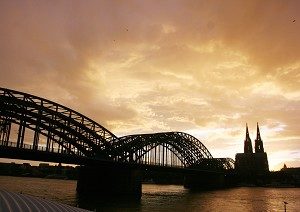 Cologne at dusk with Dom Cathedral spires in the background. (Michael Ozaki/The Epoch Times)
Cologne at dusk with Dom Cathedral spires in the background. (Michael Ozaki/The Epoch Times)Next to the Dom is the Römisch-Germanisches Museum, one of Germany’s most important archaeological centers. Many of the Rhineland area’s finest Roman findings are housed here. There are interesting collections of sculpture, glass and jewelry, but the highlight is the Dionysus Mosaic, covering almost 70 square meters.
The Schokolade (Chocolate) Museum may not count as a cultural gem, but it is one of the city’s most popular attractions. As well as displays on the history and science of chocolate-making, the museum houses a working chocolate factory, the highlight of which is a fountain oozing melted milk chocolate. Visitors are offered free tastings—be prepared for a scrumptious time.
(The Epoch Times)







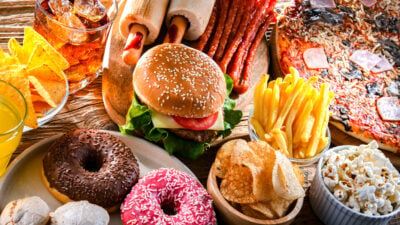
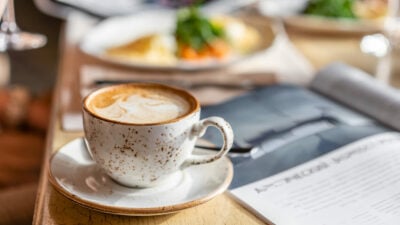

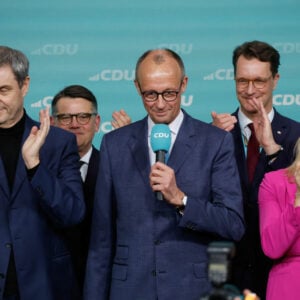






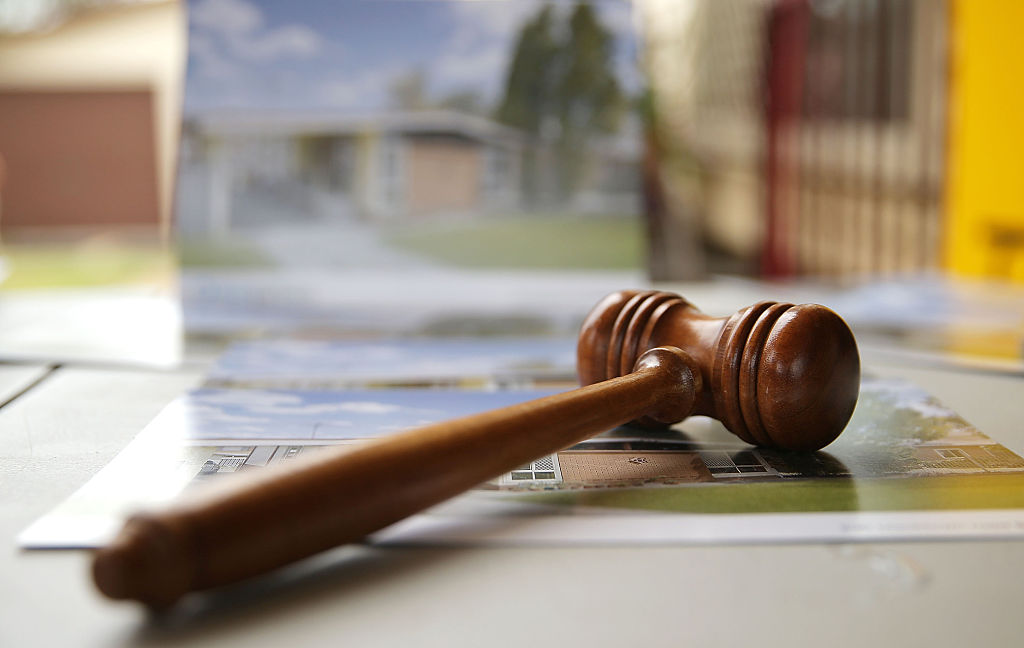
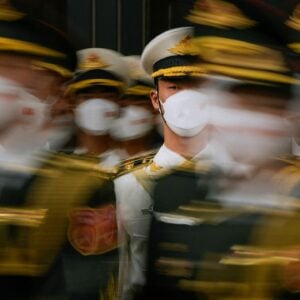


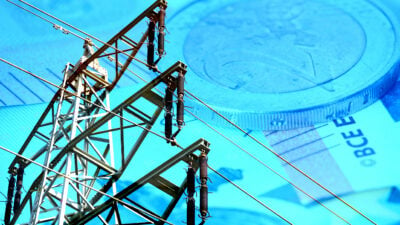

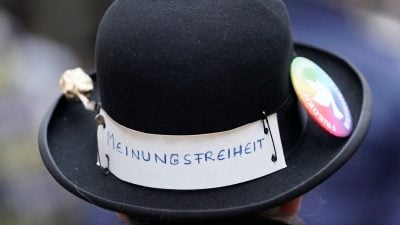
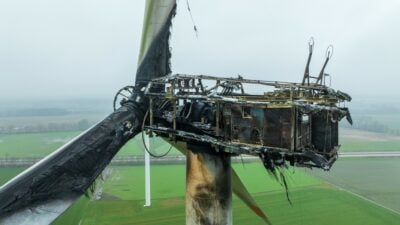
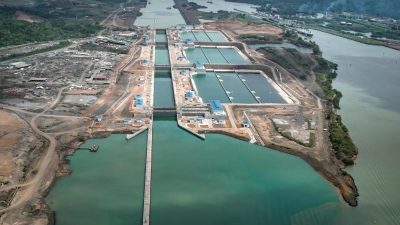
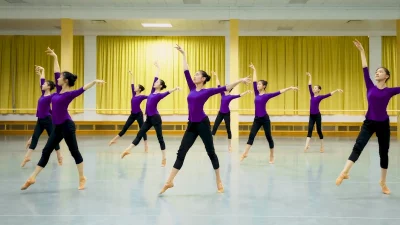
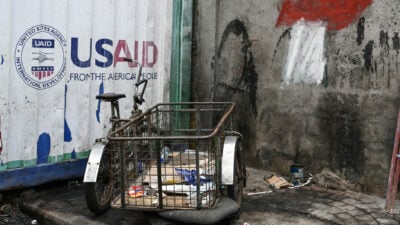
vielen Dank, dass Sie unseren Kommentar-Bereich nutzen.
Bitte verzichten Sie auf Unterstellungen, Schimpfworte, aggressive Formulierungen und Werbe-Links. Solche Kommentare werden wir nicht veröffentlichen. Dies umfasst ebenso abschweifende Kommentare, die keinen konkreten Bezug zum jeweiligen Artikel haben. Viele Kommentare waren bisher schon anregend und auf die Themen bezogen. Wir bitten Sie um eine Qualität, die den Artikeln entspricht, so haben wir alle etwas davon.
Da wir die Verantwortung für jeden veröffentlichten Kommentar tragen, geben wir Kommentare erst nach einer Prüfung frei. Je nach Aufkommen kann es deswegen zu zeitlichen Verzögerungen kommen.
Ihre Epoch Times - Redaktion